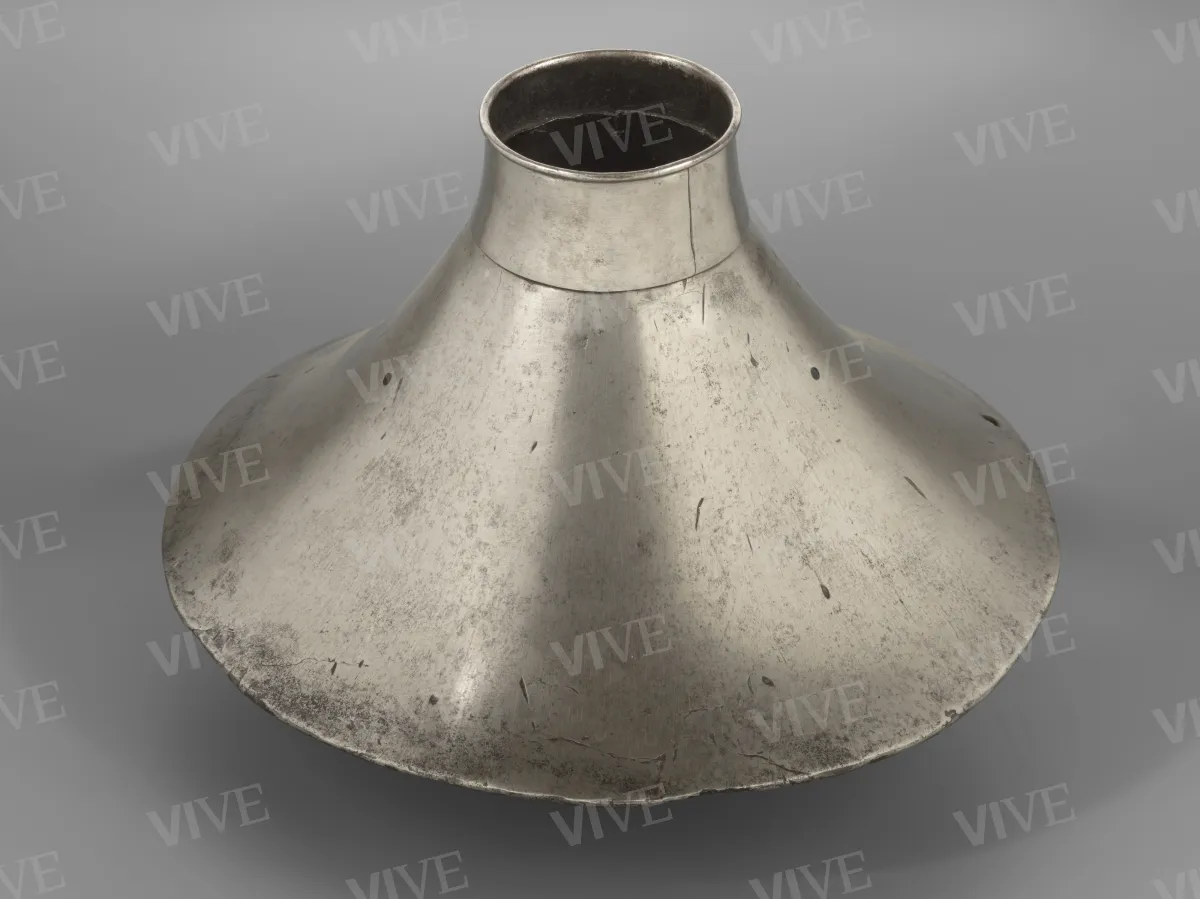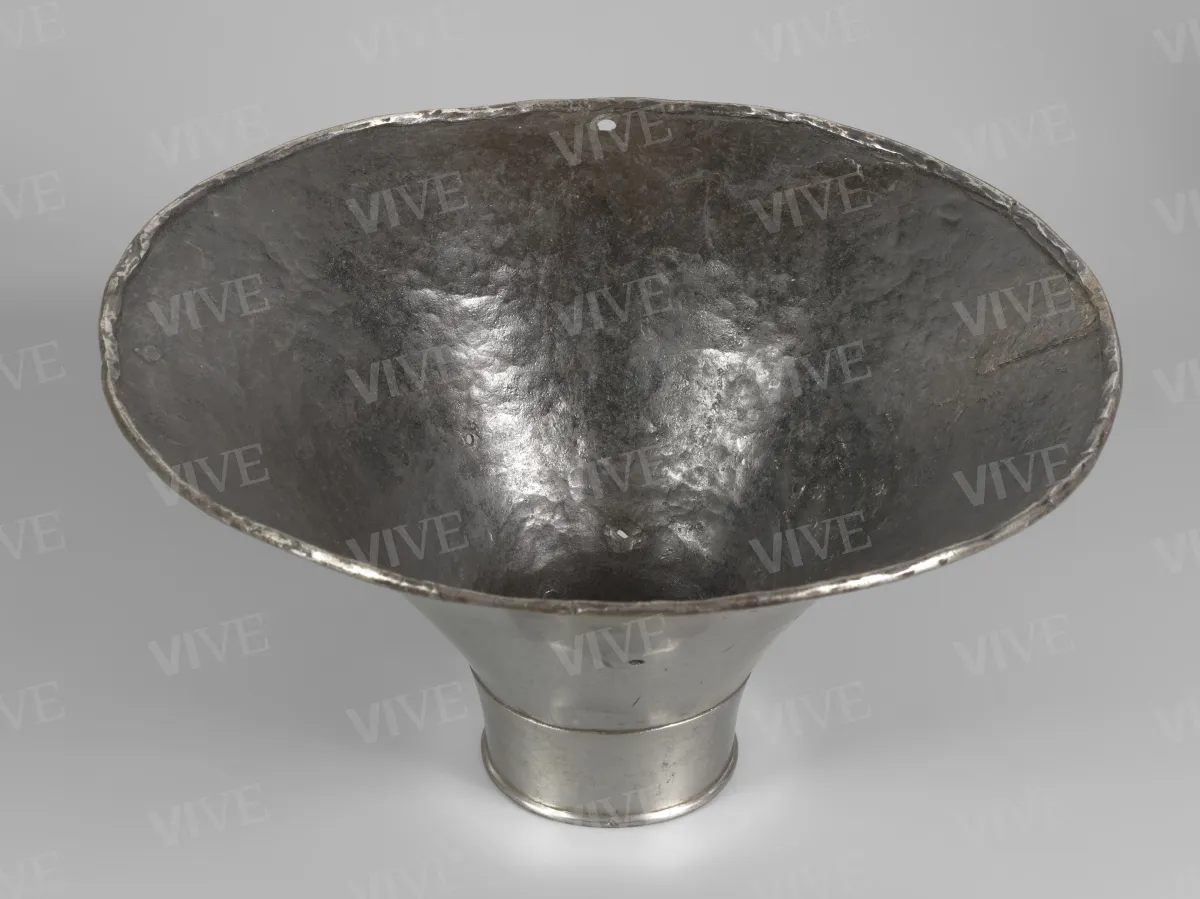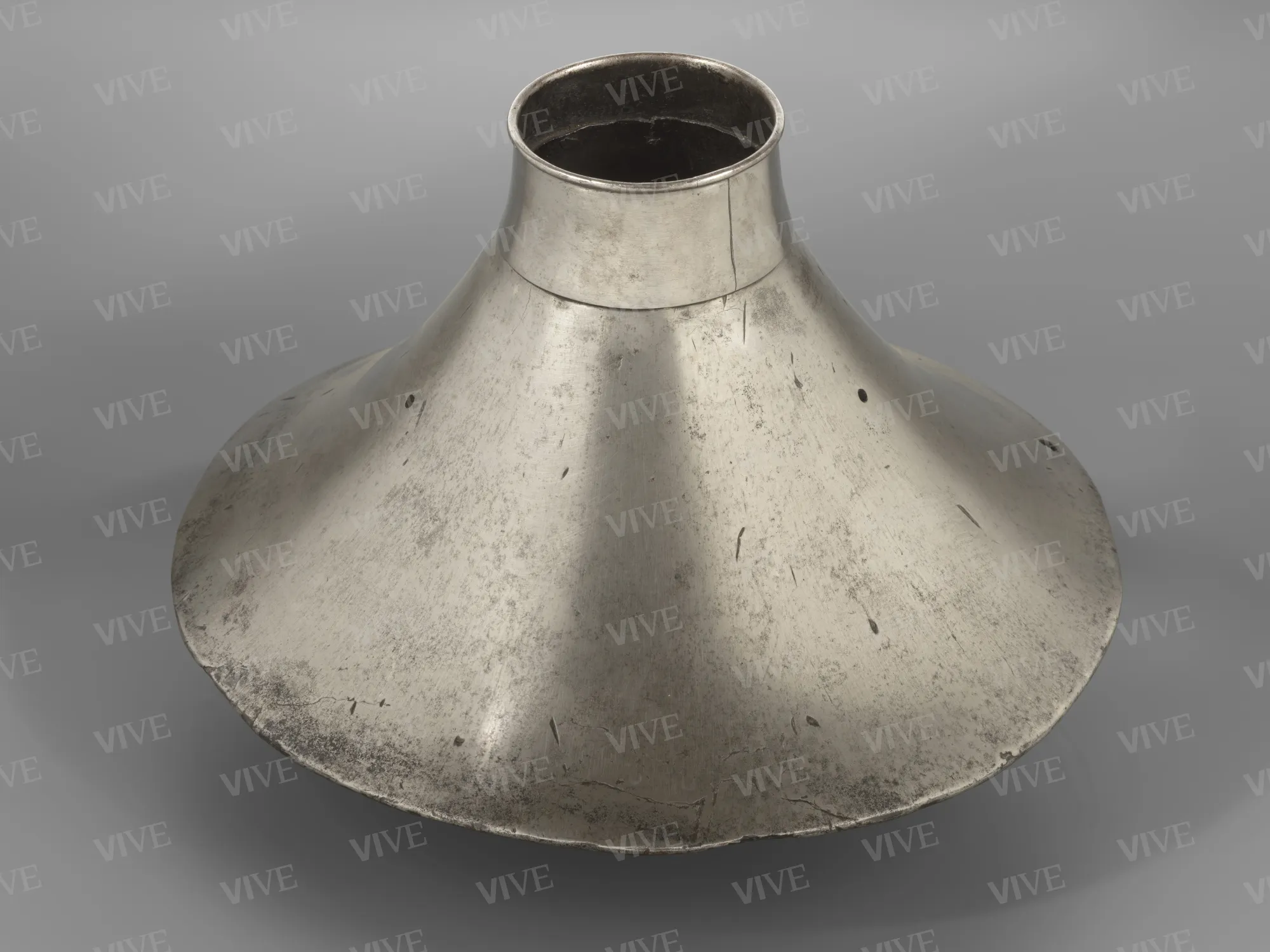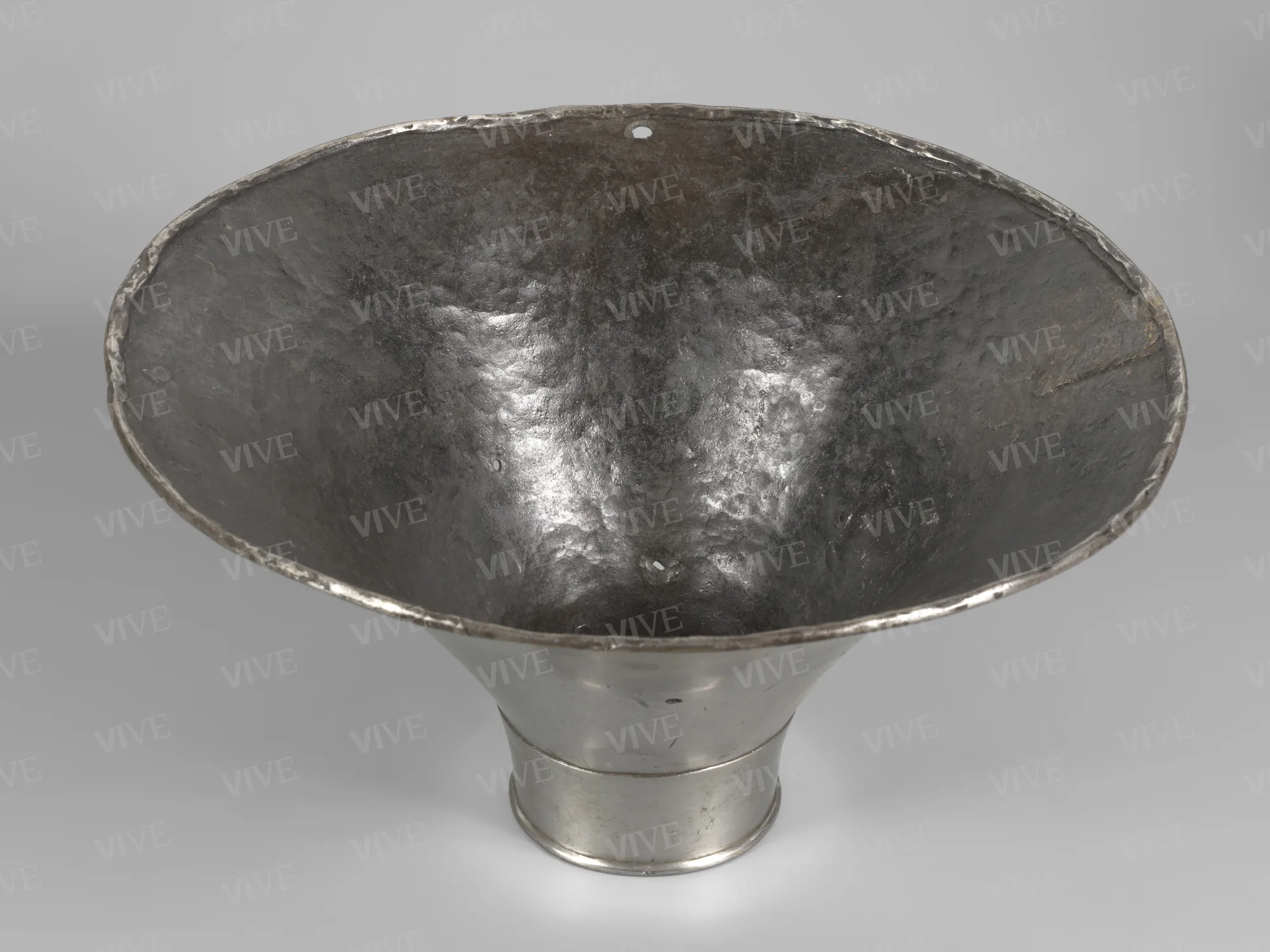Lance guard or schifalancia
Hans Vetterlein 1470–1480
The lance guard, also referred to as a schifalancia, was a device attached above the handle of a jousting lance to protect the chest from enemy blows. It ensured that the opposing lance would slide off the cone and be deflected outward. These guards were produced throughout Europe and were a key component of Renaissance armor. Some preserved examples are smooth, while others are more decorated.
The lance guard, also referred to as a schifalancia, was a device attached above the handle of a jousting lance to protect the chest from enemy blows. It ensured that the opposing lance would slide off the cone and be deflected outward. These guards were produced throughout Europe and were a key component of Renaissance armor. Some preserved examples are smooth, while others are more decorated.
Details of work
Catalog entry
This lance guard, characterized by its truncated cone shape and smooth surface, features a notable flare at its widest section. On the circumference, there is a hole as well as the manufacturer's mark stamped on it. Near the narrower end, three smaller holes are present, which were used to secure the guard to the shaft. The mouth of the guard has been reconstructed (di Carpegna 1969, p. 26, n. 135). Additionally, several impact marks are visible along the entire outer circumference.
The lance guard, also known as schifalancia, was a protective device attached above the handle of the jousting lance to safeguard the chest from enemy strikes. It ensured that the opposing lance would slide over the cone and be deflected outward. Such weapons are commonly illustrated in Renaissance tournament images, such as the engraving by Lucas Cranach the Elder depicting The Third Tournament, dated 1509 (La Rocca 2017, pp. 66–74, specifically fig. 74 for a schifalancia at the Metropolitan Museum in New York and fig. 75 for the engraving).
Schifalancia, typically plain as exemplified by the one from Palazzo Venezia or the Metropolitan Museum (inv. 27.183.94), can also be found in more elaborate versions featuring damascened or niello engravings (see Breiding 2020, p. 155, fig. 114; Grancsay 1955, p. 19, n. 9). These pieces were integral components of armor used in both warfare and jousting, and they were manufactured throughout Europe.
This piece bears a weapons maker’s mark, difficult to decipher, but identified as the initials of Hans Vetterlein, an armor maker active in Innsbruck, Austria, between 1452 and 1483. Vetterlein stamped his creations with the letters “VET” (Kunsthistorisches Museum in Vienna, inv. A3b, for a pair of smooth gauntlets). Other known pieces by this weapons maker include an iron hat and two breastplates, one of which is housed in Palazzo Venezia (inv. 12066), previously part of the collection of Prince Ladislao Odescalchi (1846–1922) (di Carpegna 1969, p. 21, n. 104). The Italian State purchased the collection in 1959, and it was placed in Palazzo Venezia in 1969. This collection was not originally a family armory but resulted from targeted acquisitions on national (Florence, Rome) and international (Paris, London) markets from the late nineteenth century onwards, guided by Odescalchi’s personal preferences (Barberini 2007).
Giulia Zaccariotto
Entry published on 27 March 2025
State of conservation
Fair.
Coats of arms, emblems, and marks
A rectangle with letters on the margin, which are hard to decipher.
Provenance
Collezione Ladislao Odescalchi (Odescalchi, no. 812);
acquired by the Italian State, 1959;
Rome, Museo Nazionale di Palazzo Venezia, 1969.
Exhibition history
Rome, Museo Nazionale di Palazzo Venezia, Antiche armi dal sec. IX al XVIII. Già Collezione Odescalchi, May–July 1969;
Rome, Museo Nazionale di Castel Sant’Angelo; Rome, Museo Nazionale di Palazzo Venezia, Armi e potere nell’Europa del Rinascimento, July 26–November 11, 2018.
References
Grancsay Stephen Vincent, Loan Exhibition of Mediaeval and Renaissance Arms and Armor from the Metropolitan Museum of Art, catalogo della mostra (Washington, County Museum of Fine Arts, 27 febbraio-31 marzo 19556), Hagerstown, 1955;
di Carpegna Nolfo (a cura di), Antiche armi dal sec. IX al XVIII. Già Collezione Odescalchi, catalogo della mostra (Roma, Museo Nazionale di Palazzo Venezia, maggio-luglio 1969), con schede a firma del curatore, Roma 1969, p. 26, n. 135;
di Carpegna Nolfo, Le armi Odescalchi, Roma 1976;
Barberini Maria Giulia, La collezione Odescalchi di armi antiche: storia della raccolta del principe Ladislao, in «Bollettino d’arte», s. VI, XCI, 2006 (2007), 137/138, pp. 101-114;
Fossà Bianca, Studio conservativo delle armi e armature Odescalchi. Nuove metodologie per la schedatura di una collezione, in «Bollettino d’arte», s. VI, XCI, 2006 (2007), 137/138, pp. 115-142;
La Rocca Donald J., How to Read European Armor, New York 2017;
Scalini Mario (a cura di), Armi e potere nell’Europa del Rinascimento, catalogo della mostra (Roma, Museo Nazionale di Castel Sant’Angelo; Roma, Museo Nazionale di Palazzo Venezia, 26 luglio-11 novembre 2018), con schede a firma del curatore, Cinisello Balsamo 2018, p. 126, n. IV.3;
Breiding Dirk H., Arm and Armor. Highlights from the Philadelphia Museum of Art, Philadelphia 2020.














